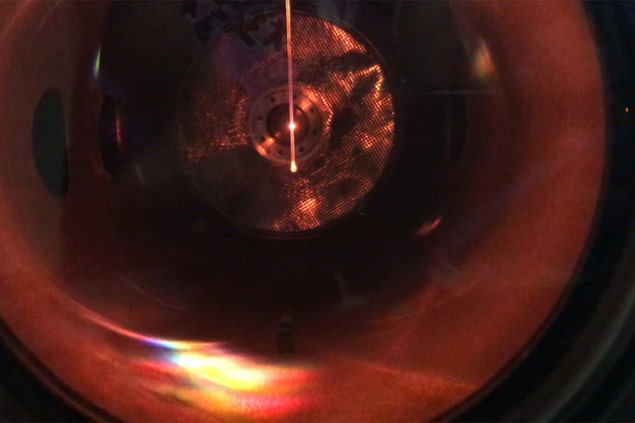
Studies of ultrafast processes could become more widely accessible thanks to researchers at the University of Central Florida (UCF) in the US, who have shown that commercially available, industrial-grade lasers can generate attosecond pulses of light. Until now, such pulses could only be created at large laboratories boasting complex laser systems.
Researchers make attosecond-scale measurements by passing an attosecond light pulse through a material. When this pulse interacts with electrons inside the material, it gets distorted. By monitoring these distortions, scientists can create 3D maps of the electrons and make movies of their motion. As an example, the classical Bohr model of hydrogen indicates that an electron takes roughly 150 attoseconds (10-18s) to orbit the hydrogen nucleus. Measurements with attosecond precision therefore enable researchers to study motion at a subatomic scale, which is vital for understanding fundamental physics phenomena such as interactions between light and matter.
Such measurements are, however, currently only possible in world-class laser facilities. While UCF houses such a facility, and another dozen or so exist worldwide, team leader Michael Chini explains that none of them truly operate as user facilities – that is, institutions that allow scientists from other fields to come in for a short period and use their equipment for research. This lack of access creates a barrier for chemists, biologists, materials scientists and others who could benefit from applying attosecond science techniques to their work, he says.
Obtaining few-cycle pulses from industrial-grade lasers
The extremely short light pulses employed in attosecond-scale experiments consist of a single oscillation cycle of an electromagnetic wave. Such cycles are typically generated by propagating femtosecond (10-15s) laser pulses through tubes filled with noble gases such as argon or neon. The interaction between the light pulses and the gas broadens their spectrum, making it possible to compress them further in time.
Chini and colleagues have now developed a way of obtaining such few-cycle pulses from industrial-grade lasers, which could previously only produce pulses of much longer duration. They achieved their feat by compressing approximately 100-cycle pulses in tubes that contained molecular gases instead of noble gases and varying the length of the pulses sent though the tubes. This procedure made it possible to compress the pulses by a factor of 45, squeezing them down to just 1.6 oscillation cycles. At that point, Chini says, they showed that they could use these compressed pulses to produce attosecond pulses by generating an extreme ultraviolet supercontinuum – something he describes as “a hallmark of attosecond pulse generation”.
Choice of gas and pulse duration are key
Study lead author John Beetar notes that the duration of the initial laser pulse is key. Filling the tube with a molecular gas – and especially a gas of linear molecules, such as the nitrous oxide used in this work – enhances the compression effect because the molecules tend to rotate into alignment with the laser field. However, this alignment-induced enhancement is only present if the pulse is long enough to rotationally align the molecules. The choice of gas is important, too, because the rotational alignment time depends on the molecule’s inertia. To maximise the enhancement, the researchers aim to make this inertia coincide with the duration of their light pulses.
Industrial lasers generate attosecond light pulses
The UCF researchers, who report their work in Science Advances, say that single-cycle pulses are within reach using their technique. With further refinements, Beetar adds that the reduction in complexity associated with commercial, industrial-grade lasers should make attosecond science more approachable and could enable more interdisciplinary applications.
